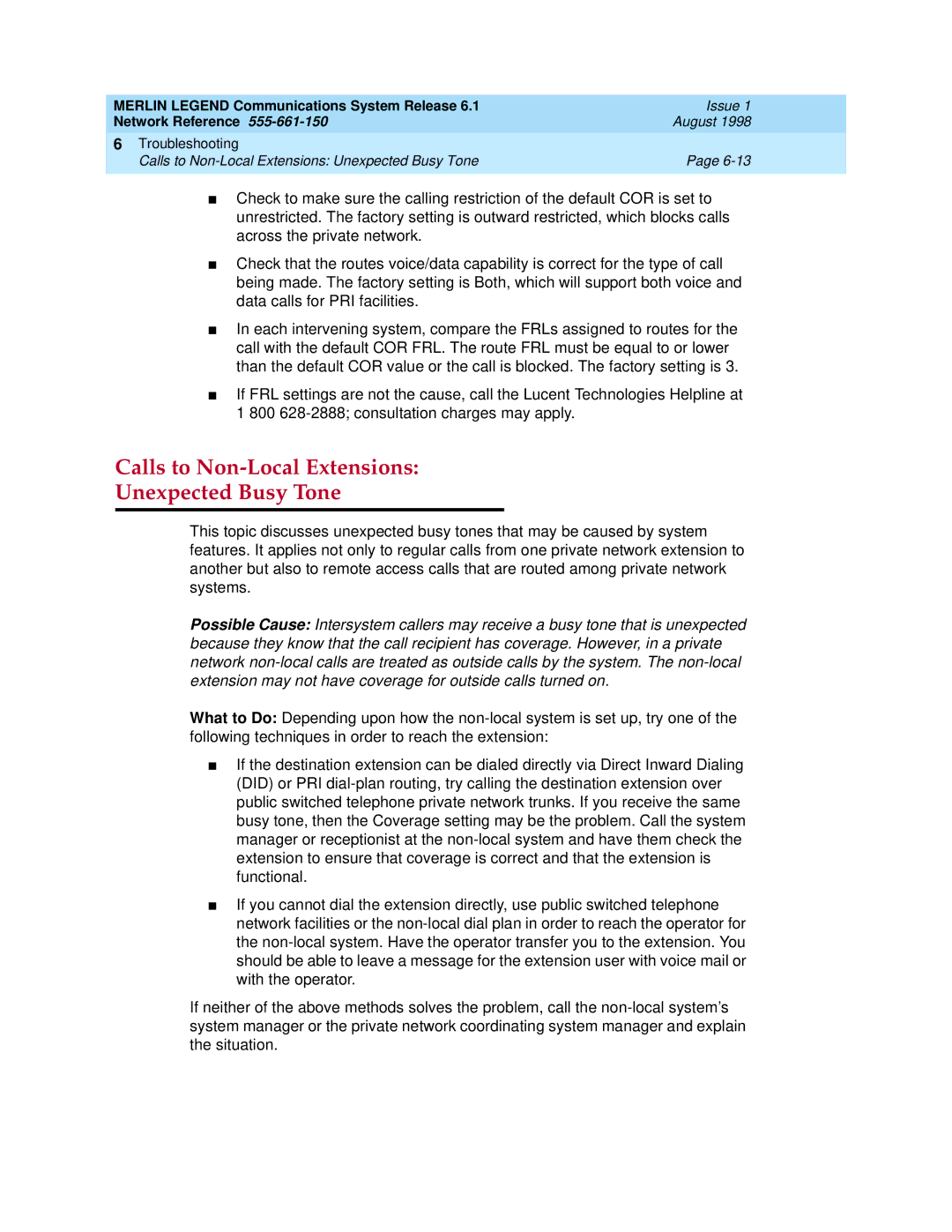MERLIN LEGEND Communications System Release 6.1 | Issue 1 |
Network Reference | August 1998 |
6 Troubleshooting |
|
Calls to | Page |
|
|
■Check to make sure the calling restriction of the default COR is set to unrestricted. The factory setting is outward restricted, which blocks calls across the private network.
■Check that the routes voice/data capability is correct for the type of call being made. The factory setting is Both, which will support both voice and data calls for PRI facilities.
■In each intervening system, compare the FRLs assigned to routes for the call with the default COR FRL. The route FRL must be equal to or lower than the default COR value or the call is blocked. The factory setting is 3.
■If FRL settings are not the cause, call the Lucent Technologies Helpline at 1 800
Calls to | 6 |
Unexpected Busy Tone |
This topic discusses unexpected busy tones that may be caused by system features. It applies not only to regular calls from one private network extension to another but also to remote access calls that are routed among private network systems.
Possible Cause: Intersystem callers may receive a busy tone that is unexpected because they know that the call recipient has coverage. However, in a private network
What to Do: Depending upon how the
■If the destination extension can be dialed directly via Direct Inward Dialing (DID) or PRI
■If you cannot dial the extension directly, use public switched telephone network facilities or the
If neither of the above methods solves the problem, call the
